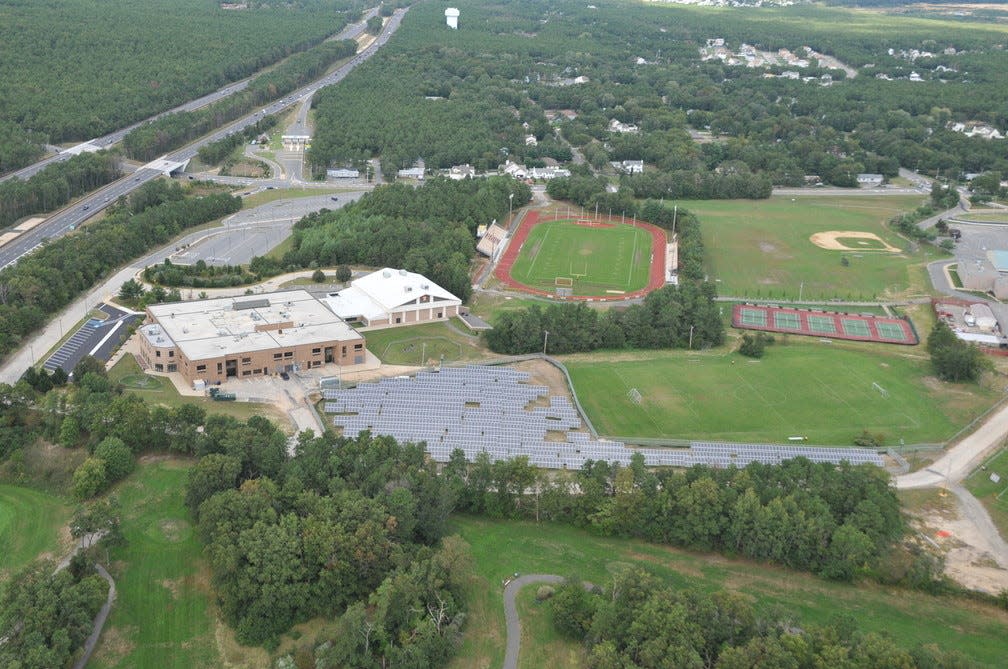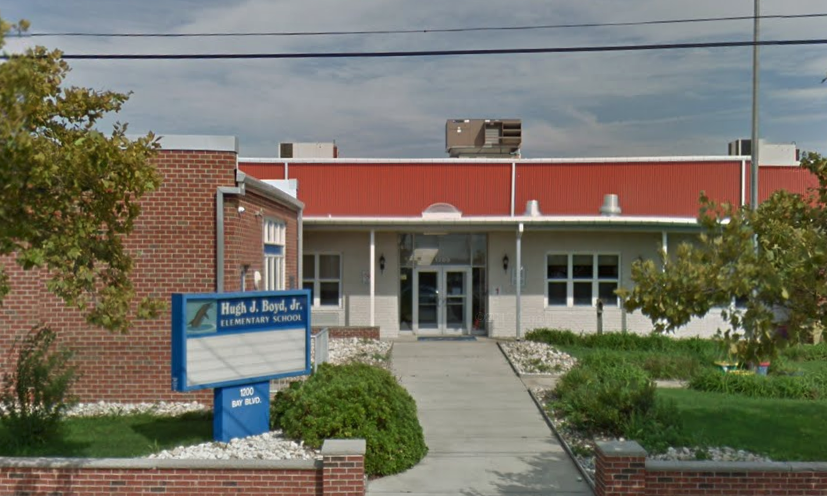School fight! Toms River, Central Regional battle over who gets Seaside Heights

BERKELEY - Central Regional's Board of Education has decided to fight Toms River Regional's proposed merger with Seaside Heights schools, contending that children who attend Hugh J. Boyd Elementary School in Seaside Heights "receive a greater educational benefit" at Central than they would if they were moved to East Dover Elementary in Toms River.
The objection means Toms River Regional and Seaside Heights will likely not be able to hold a school merger referendum on March 12 as officials had initially hoped. Voters from both Seaside Heights and Toms River Regional must approve a referendum in order for the merger to take place.
Acting state Education Commissioner Kevin Dehmer must approve the referendum question before a vote can be held.
Education Department spokesman Howard Seidman said, "Central Regional School District submitted a response on February 20. The petitioners, Toms River Regional School District, Seaside Heights Borough, and Seaside Heights Board of Education, now have until February 28th to reply to that response."
Different visions: Why does Seaside Heights encourage development while neighboring Toms River fights it?

Central Regional said it is undertaking its feasibility study. It has proposed combining with neighboring Ocean Gate Elementary School to create a pre-kindergarten-to-12th grade regional district that could eventually include all five of Central's constituent towns.
"The goal would be to create a new preschool-to-12 district that hopefully delivers cost savings to taxpayers while improving the educational experience for all students by providing a consistent curriculum and educational program continuity for all municipalities," according to a report submitted by Eric Harrison, a lawyer representing Central Regional, to Judith DeStefano, interim Ocean County Superintendent of Schools.
A pre-K-to-12 Central district would allow the Boyd School to remain open; Harrison said. It would be closed if the merger between Toms River Regional and Seaside Heights goes through.
A regionalization report prepared for Seaside Heights in November prepared by Statistical Forecasting LLC, Porzio Compliance Services and Steven Cea estimated both Seaside Heights and Toms River would save about $2.7 million by closing the Boyd school and sending its elementary students to East Dover Elementary School and Toms River Intermediate East.
Toms River would receive an estimated $6.5 million annually in additional property taxes from Seaside Heights, according to the report.
Ocean County news: Feeling brave (or crazy)? Jersey Shore's biggest polar plunge returns to Seaside Heights
More than 83% of Boyd students are considered economically disadvantaged, and about 43% speak a language other than English at home, mainly Spanish. Several parents have expressed concerns about their children going to school in Toms River, as they do not have cars, and would be unable to pick up their children if there was an issue.
Students in Seaside Heights are able to walk to school at the Boyd building, while they would have to be bused to East Dover Elementary, the Central report notes.
How we got here: Parents protest as Seaside Heights pushes for vote on schools merger with Toms River
"Boyd Elementary School cultivates and sustains a culture of caring. Instructional practices and strategies promote student growth and understanding of required, adopted curriculum standards," according to a response to the merger petition prepared by Harrison for Central Regional. "Supplemental services and resources encourage academic success and well-being for all learner types. The school is connected to the community, which allows all students to thrive in a healthy, safe and welcoming environment."
You can read a copy of Central's petition below this story.
Central Regional educates kids in grades 7-12, and includes students from Berkeley, Ocean Gate, Island Heights, Seaside Heights and Seaside Park. Seaside Heights' students go to Central after they graduate sixth grade at Boyd.
Central's opposition to the proposed Toms River-Seaside Heights merger was expected; the district's school board indicated last month it would fight Seaside Heights withdrawal.
Central says it is slated to lose about $3 million in tax revenue should the 200 Boyd students leave, not the $2.5 million estimated in the regionalization report.
Central also disputes the report's estimate of a $1 million savings in staff and materials if Boyd school closes, saying the savings is actually $300,000.
The financial implications of a withdrawal "amounts to an average of 3.3 to 4.6 cents per dollar on the respective tax rates of the other 4 municipalities. This kind of tax rate increase would cause great harm to the residents of the remaining towns," according to Kevin Shea, board secretary and business administrator in both Central Regional and Seaside school districts.
More school fights: Large crowd shuts down hearing on Ocean County church plan to rent to homeschoolers

Seaside Heights' Board of Education, which submitted a request for the merger referendum to the state education department in December, pointed to the Boyd school's shrinking enrollment — and better opportunities for kids — as among the reasons that students would be better served in Toms River. Boyd's enrollment of about 200 students has declined 12% since 2012, when about 230 children attended the school.
Seaside Park Elementary School closed in 2010 following years of dwindling enrollment; children from that town can attend elementary school in Toms River or in Lavallette, but go to Central Regional for upper grades.
The regionalization report estimated both Seaside Heights and Toms River would save about $2.7 million by closing the Boyd school and sending its elementary students to East Dover Elementary School and Toms River Intermediate East. Toms River Regional would receive the state aid and property taxes tied to Seaside Heights' students.
Toms River would receive an estimated $6.5 million annually in additional property taxes, according to the report.
Central disputes many of the report's findings, arguing there is no proof that families with children will not move to new housing in Seaside as the borough continues its development, meaning Boyd enrollment could rise. Harrison pointed out that Boyd school offers universal prekindergarten classes to all 3- to 5-year-olds in the borough, while Toms River does not have universal pre-K.
Central also notes that the Boyd School, which suffered massive damage from flooding during 2012's Superstorm Sandy, was rebuilt with more than $1 million in state money; closing the school would "squander" those funds.
If the districts merged, Toms River Regional would have state funding restored due to a law passed in August known as S3950, Superintendent Mike Citta has said. The new law exempts regional school districts serving five or more New Jersey municipalities.
To qualify, these regional districts must also have administrative per-pupil costs that are at least 15% below the state average and their boards must have raised school taxes by the maximum allowed by law over the previous five years.
Toms River is one of several Shore school districts that have suffered drastic cutbacks in state aid dating back to 2018, the new school-funding law known as S2 realigned the school funding formula in the state.
Citta said Thursday that Toms River Regional plans to answer the Central petition, and added that pre-kindergarten would be available to Seaside Heights' children if the merger takes place, because funding for the program would follow those kids to Toms River.
"We do have limited pre-K," Citta said. "The kids that have it, would keep it."
Citta said Toms River Regional is still hopeful a referendum can happen this spring; he said it is possible to hold a vote on April 16, a date permitted by the state for a school expansion election.
"The frustrating part for me is that this study was initiated by Seaside Heights," Citta said. "And the number one thing that they dispute, the education of the elementary school students, they don’t really have a say in. Seaside Heights' board supported it."
Jean Mikle covers Toms River and several other Ocean County towns, and has been writing about local government and politics at the Jersey Shore for nearly 40 years. She's also passionate about the Shore's storied music scene. Contact her: @jeanmikle, jmikle@gannettnj.com.
Central Regional response by Dennis Carmody on Scribd
This article originally appeared on Asbury Park Press: Toms River, Central Regional schools fight for Seaside Heights

